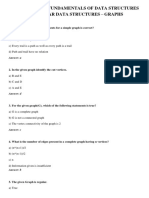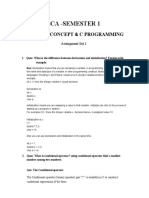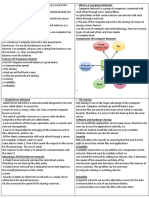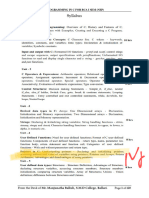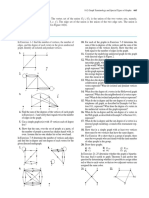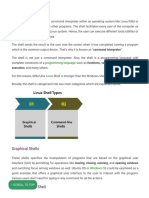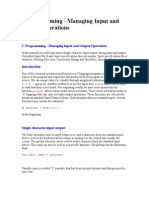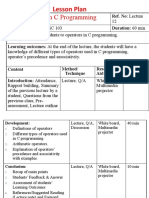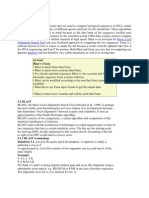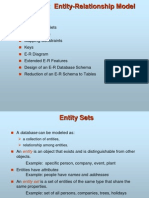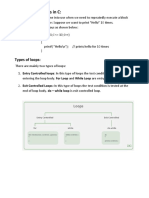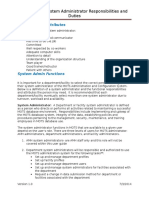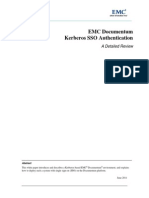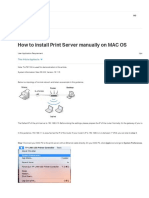100% found this document useful (1 vote)
250 views5 pagesC Looping Statements Explained
Looping statements in C programming allow blocks of code to be repeatedly executed. There are three types of loops: while, for, and do-while. The while loop checks a condition before each iteration. The for loop is used when the number of iterations is known. The do-while loop checks the condition after executing the block of code at least once. Loops help reduce code length and memory usage by executing blocks of code repeatedly through iteration.
Uploaded by
Princess DianneCopyright
© © All Rights Reserved
We take content rights seriously. If you suspect this is your content, claim it here.
Available Formats
Download as DOCX, PDF, TXT or read online on Scribd
100% found this document useful (1 vote)
250 views5 pagesC Looping Statements Explained
Looping statements in C programming allow blocks of code to be repeatedly executed. There are three types of loops: while, for, and do-while. The while loop checks a condition before each iteration. The for loop is used when the number of iterations is known. The do-while loop checks the condition after executing the block of code at least once. Loops help reduce code length and memory usage by executing blocks of code repeatedly through iteration.
Uploaded by
Princess DianneCopyright
© © All Rights Reserved
We take content rights seriously. If you suspect this is your content, claim it here.
Available Formats
Download as DOCX, PDF, TXT or read online on Scribd
/ 5
















